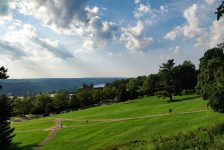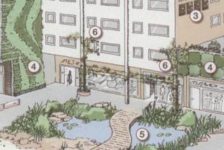In my home country of Brazil, landscape architecture is considered part of a five-year architecture degree and not as a separate discipline. In fact, landscape architecture is usually just the subject of two or three courses covered over two or three semesters. This means that in Brazil, we usually don’t have the opportunity to learn the many aspects of landscape architecture, such as planting, ecology, biodiversity and so forth. Because of this learning structure and my understanding of landscape architecture before moving to New Zealand, I have been predominantly against the idea of separating landscape architecture from architecture. My views, however, have since changed.
In New Zealand, landscape architects have largely different skills from architects. Here, architecture, architecture theory and history, building science, interior design, landscape architecture, planning and urban design are all viewed as independent degrees. Most of these degrees take around three years to complete. Despite my early skepticism, my experience at New Zealand’s Lincoln University changed my mind about why landscape should be considered a separated degree.
For a snapshot into how landscape architecture is treated in New Zealand, here is an excerpt from the Lincoln University Landscape Architecture Booklet:
… Graduates can also look forward to working on a wide range of projects – from civic developments, urban design and tourism developments, to residential and lifestyle subdivisions and commercial, institutional and industrial projects. They can also work on parks, highways, heritage conservation, ecological restoration and revegetation, city or rural planning and resource planning.
Landscape architecture as an undergraduate degree doesn’t exist in Brazil. Our options are to study five years of architecture and urban design (including even calculations of concrete structures) and then add a couple more years to specialize in landscape; or we work with professionals from other areas such as ecology, agronomy, forestry and so forth. This can be an unrealistic career path in many cases, especially when the budget for professional contracts is limited, which results in aspects of the landscape being compromised. On the other hand, many different professionals are allowed to be ‘responsible’ or ‘sign off’ the designs, meaning that architects alone can design a park, for example. But is that truly responsible? Do those with minimal landscape education actually have the right qualifications to evaluate and plan the environmental impacts our designs can generate?
RELATED STORY: My Experience as Nigeria’s First Ever Landscape Architecture Graduate
Luckily, landscape in Brazil has been evolving and shifting from a purely architectural profession to a broader, more environment based one. It is now recognized that the role of these professionals is much larger than the artsy sketches and gardens they produce. However, the view is still closely connected to architectural and urban design, implying that landscape is something that is constructed, and therefore natural and rural landscapes are outside the scope of the profession.
Studying in New Zealand has clarified the importance of having landscape architecture as an independent degree. The way landscape is structured in Brazil means we don’t have a professional who can bridge design, environment assessment and planning. I’ve come to see this as a danger to the environment. Studying here in New Zealand has also highlighted why designing landscapes in Brazil has for a long time felt too simple, or overly complex. It is a garden, a park or nothing. Despite being fascinated by the urban climate and human comfort, I feel providing shade and spaces for people just isn’t enough.
Where are you from? How are all these planning and design related professions structured in your country? Or are you from Brazil or New Zealand? If so, what is your opinion about the profession in your country?
The above post was first published on The Comfort Pursuit and was inspired by my recently co-authored conference paper that compares the teaching of landscape architecture in Brazil and New Zealand.
Image: Banks Peninsula, Christchurch, New Zealand © Silvia Tavares
Bio: Silvia Tavares is a PhD Candidate and Tutor of Landscape Architecture at Lincoln University (Christchurch, New Zealand). She is a Brazilian national and her research interests include urban landscapes and urban comfort, microclimate, culture, post-disaster recovery and climate change.
Published in Blog









